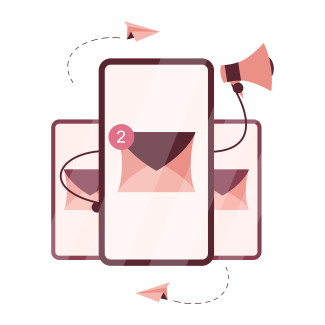1. Set goals.
Before setting up a referral program, you need to think about why it would be good for your business (besides increasing customers). Do you hope to drive growth and revenue, increase customer loyalty, generate more leads, build trust — or all of the above? Defining your goals will help you to measure how effective your campaign is later, and what you can do to improve it.
2. Define your message.
Your referral program should be easy for customers to understand and clearly define what they should do. If your message isn't clear, customers will likely ignore it and move on to something else. You should also provide them with a range of options to share your message, like a referral link that redirects to your site or social sharing buttons on an email or newsletter.
3. Choose your incentives.
Incentives can be monetary or non-monetary depending on the industry you're in. For example, many software companies offer clients credit toward their subscription plans or free storage space for referring new customers. Whatever you choose, make sure that the incentive fits your brand image and benefits both existing and new customers.
4. Set up analytics.
Before launching your referral program, it's important to set up analytics to monitor the effectiveness of your campaign. Knowing how different channels perform will give you an idea of what works and what doesn't, and allow you to implement changes to your program as you go along. Consider investing in referral program software to help you manage your program effectively.
5. Promote your referral program.
Once you have refined all the details, be sure to promote your referral program across as many channels as you can.
6. Add the referral web package.
Consider adding a Referral Web Package to your referral program. A referral web package provides your customers with a custom landing page where they can easily refer friends and family. This page can include information about your business, your referral program, and any incentives that you are offering. By providing a dedicated space for referrals, you can increase the likelihood of your customers sharing your message and referring new business to you.
7. Follow up with your customers.
Don't forget to follow up with your customers after they have referred someone to your business. A simple thank you email or a personalized message can go a long way in building customer loyalty and encouraging repeat referrals. You can also use this opportunity to offer additional incentives for repeat referrals or to ask for feedback on your program.
8. Monitor and adjust your program as needed.
Even after launching your referral program, it's important to monitor its effectiveness and make adjustments as needed. Pay attention to the number of referrals you're receiving, the channels that are performing best, and any feedback from your customers. Use this information to tweak your program and make it more effective over time.












